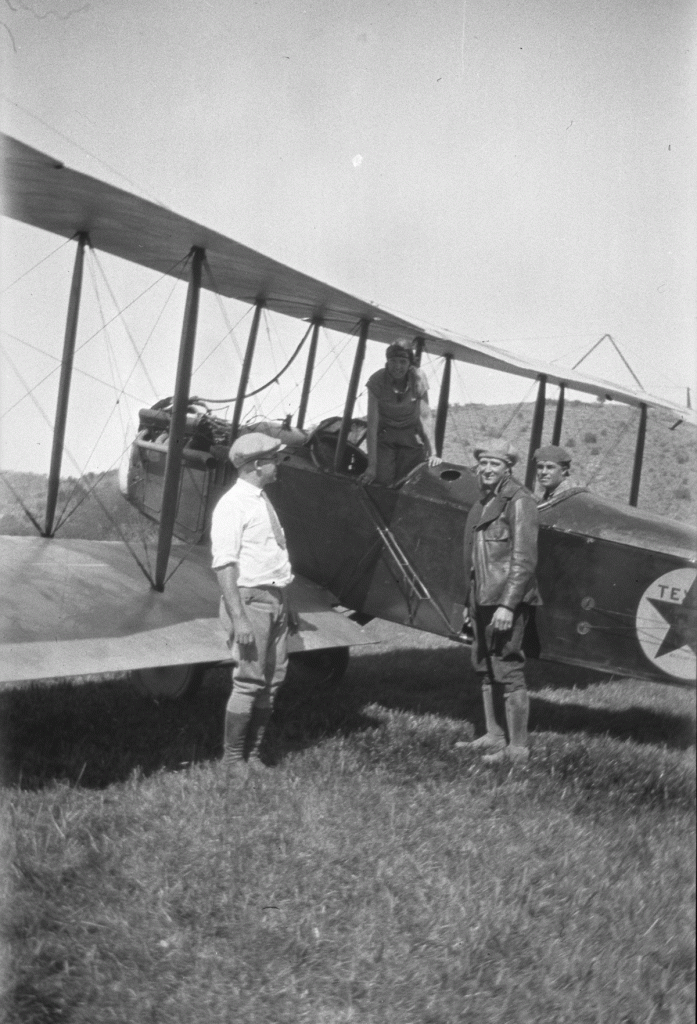“Aviation, the word that charms the multitude – that thrills the heart – that crowds the grandstand. It’s the latest innovation in sportsdom and one that appeals to every nation.”
-Advertisement, Deseret News, February 19, 1911; recounted in Deseret
News, December 4, 2003The earliest forays into air travel were not covered widely by media outlets of the time. However, regional enthusiasm for aviation was surely stoked when approximately 10,000 spectators flocked to the Great International Aviation Carnival held in Salt Lake City in April 1911. The event, the first of its kind in the western United States, attracted a crowd that included (LDS) Church President Joseph F. Smith and Utah Governor William Spry. The curious observers were on hand to witness a spectacular flying competition held among teams from the Wright Brothers and the Curtis Aeroplane and Motor Company.
The very first flight in Utah had occurred only one year prior, on January 30, 1910, when Louis Paulhan, a French aviation pioneer, established a new world record for flying at a height of 4,600 feet above sea level. However, due to Salt Lake City’s altitude, coupled with the weight of his biplane, Paulhan was disappointed to be flying only 300 feet above the assembled crowd.
The first recorded account of an airplane passing through Park City airspace came almost a decade later, on August 15, 1919, when an aircraft flew at an altitude of 1,000 feet above the town. The plane “sailed gracefully over the city at 1:45 [that] afternoon and attracted much attention.” The plane was bound for the town of Myton, in Duchesne County, to deliver news that the first concrete steps were taken toward the building of a new railroad in the Uintah Basin.

Credit: Park City Historical Society & Museum, Thomas F. Hansen Collection
Park City residents were given the opportunity to take their very own “air trips” two years later, in 1921. On a Saturday in July, an airplane touched down in a field near the site of the Broadwater Mill below town. Locals who had gathered to observe the barnstorming event were invited to purchase flights of their own. Newlyweds Mr. & Mrs. Lawrence Schaper were among local residents who eagerly signed up to take a spin in the air. Although Mr. Schaper had experienced air travel during his military service, for Mrs. Schaper, “the experience was a ‘thrilling novelty,’ long to be remembered and talked about by the young bride.”
Later that same day, two less fortunate joy-riders endured a more harrowing conclusion to their flight: “All went well until a landing was made, when the machine ‘nosed’ into an irrigation ditch and toppled over, giving the passengers the extra experience of hanging head downwards until the machine could be righted.” The unharmed but frightened passengers were rescued from their ill-fated flight and the aircraft underwent repairs and returned to service the following Monday.
Park City has at times been a more treacherous and, on a few occasions, fatal destination for unluckier pilots. Readers can find several morbid accounts of crashes that have occurred in the area in the archives of the Museum’s weekly Way We Were column at https://parkcityhistory.org/category/way-we-were/.
Join the Park City Museum for an in-person lecture titled The Wright Brothers and Their Flying Machines given by Dorian DeMaio on September 14 from 5-6 p.m. at the Park City Museum Education and Collections Center located at 2079 Sidewinder Drive. Please register for the lecture at parkcityhistory.org.